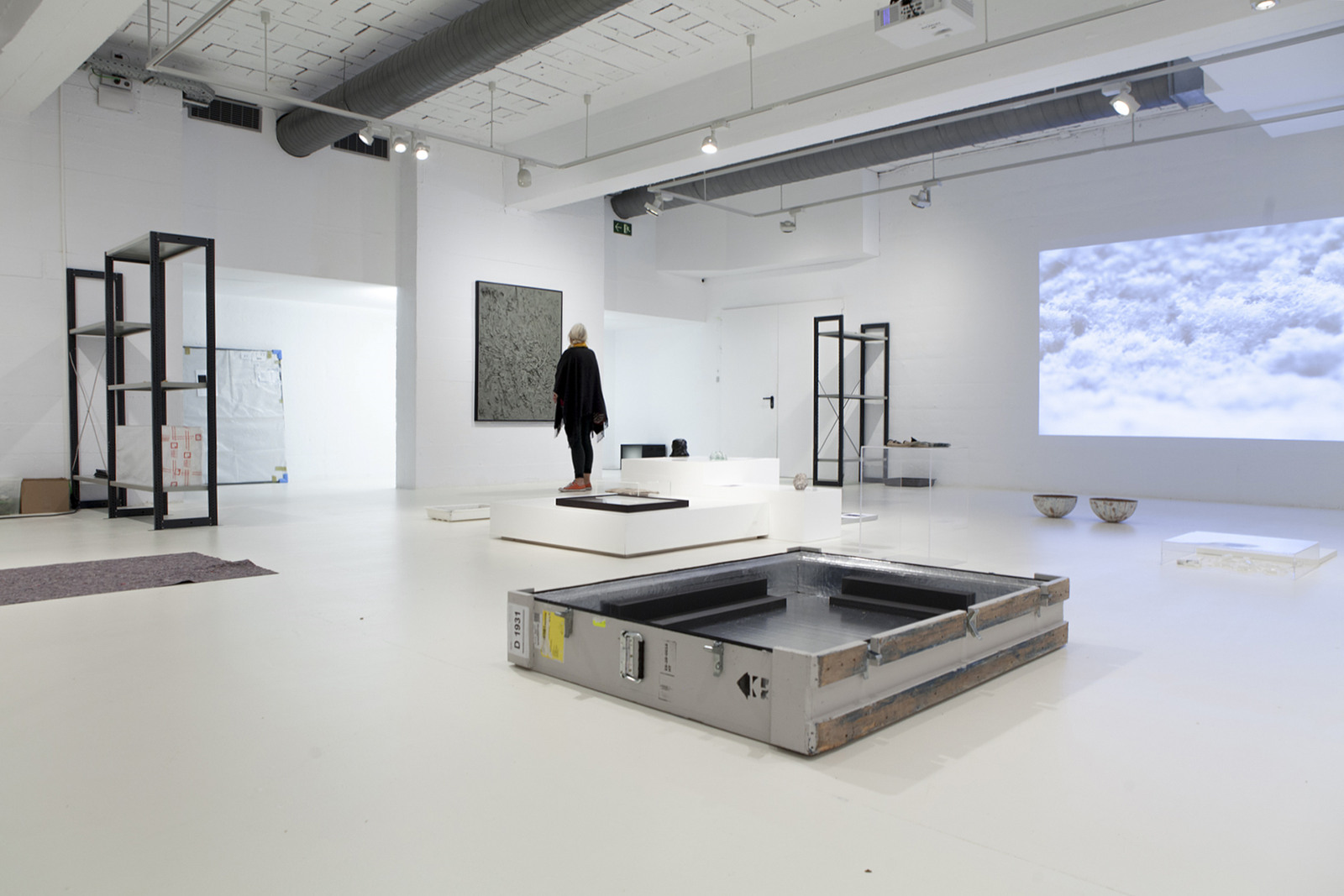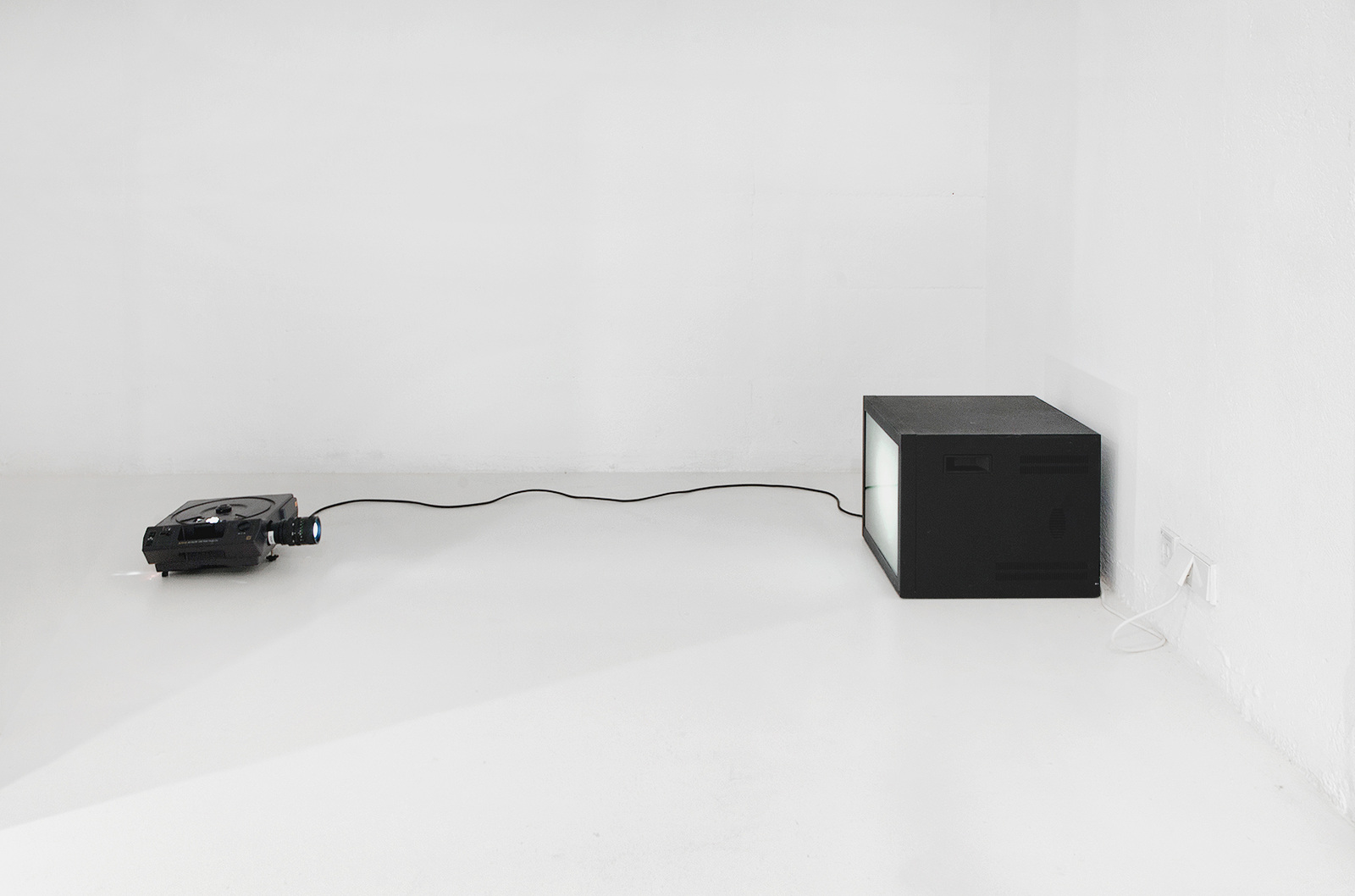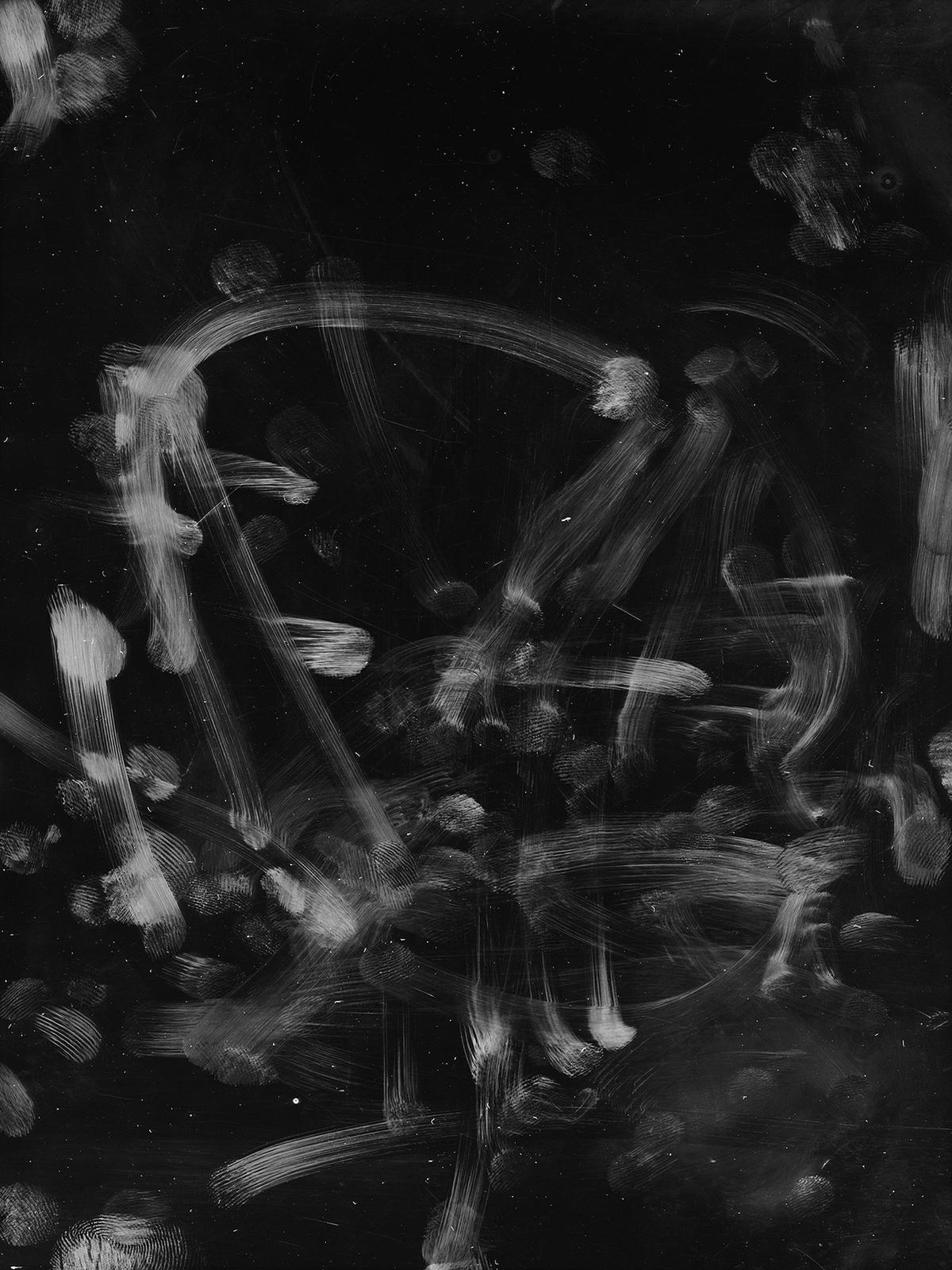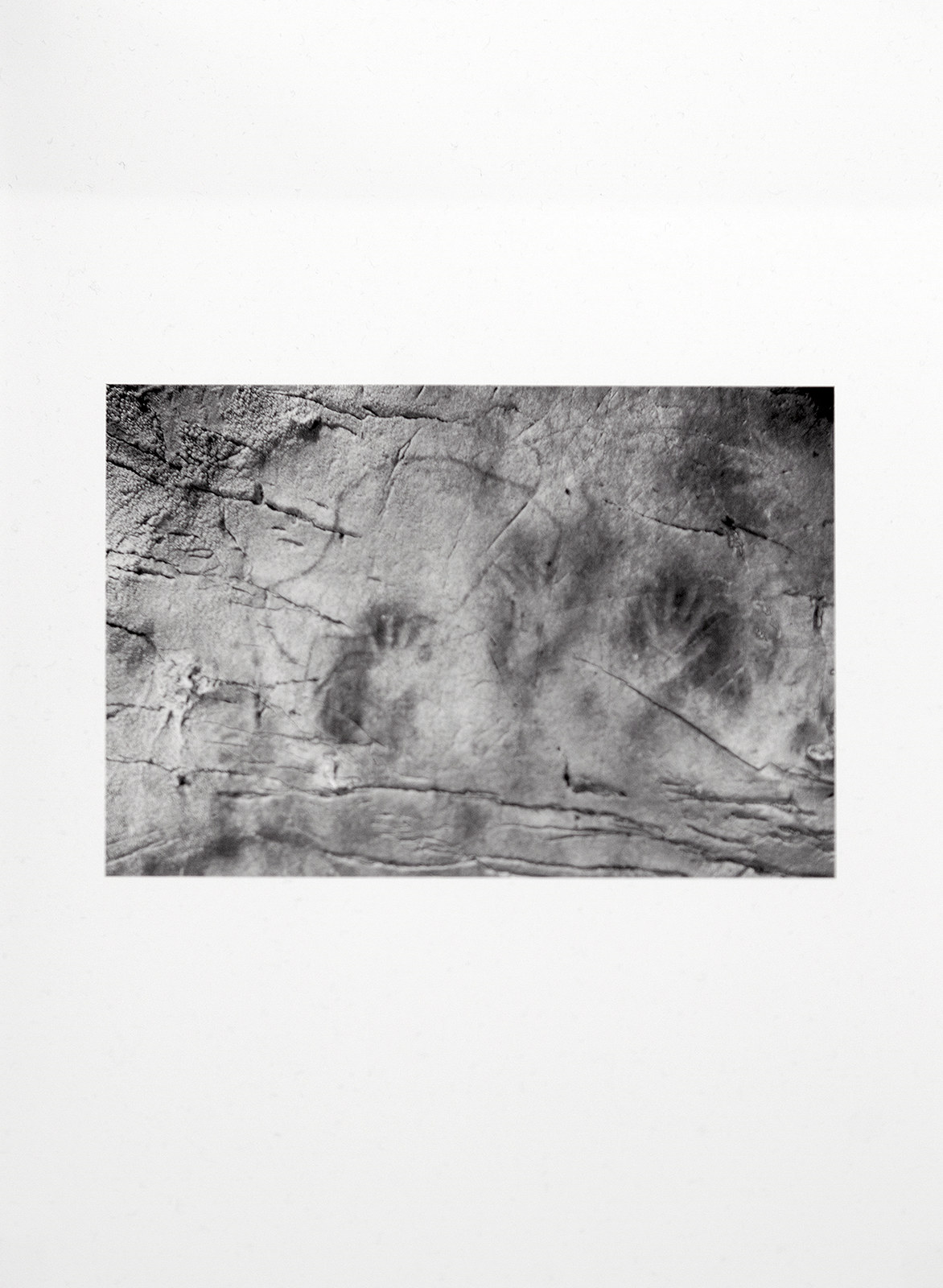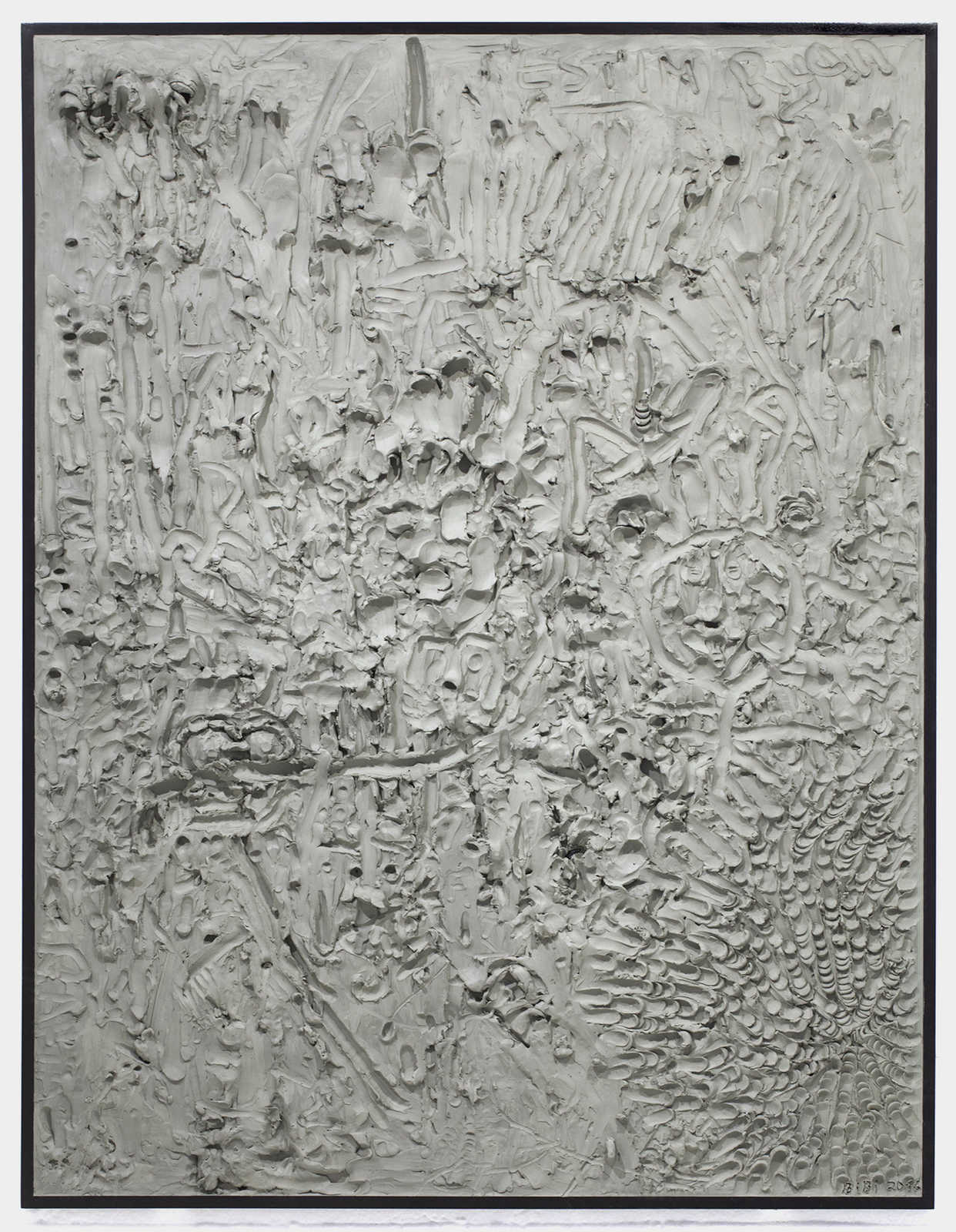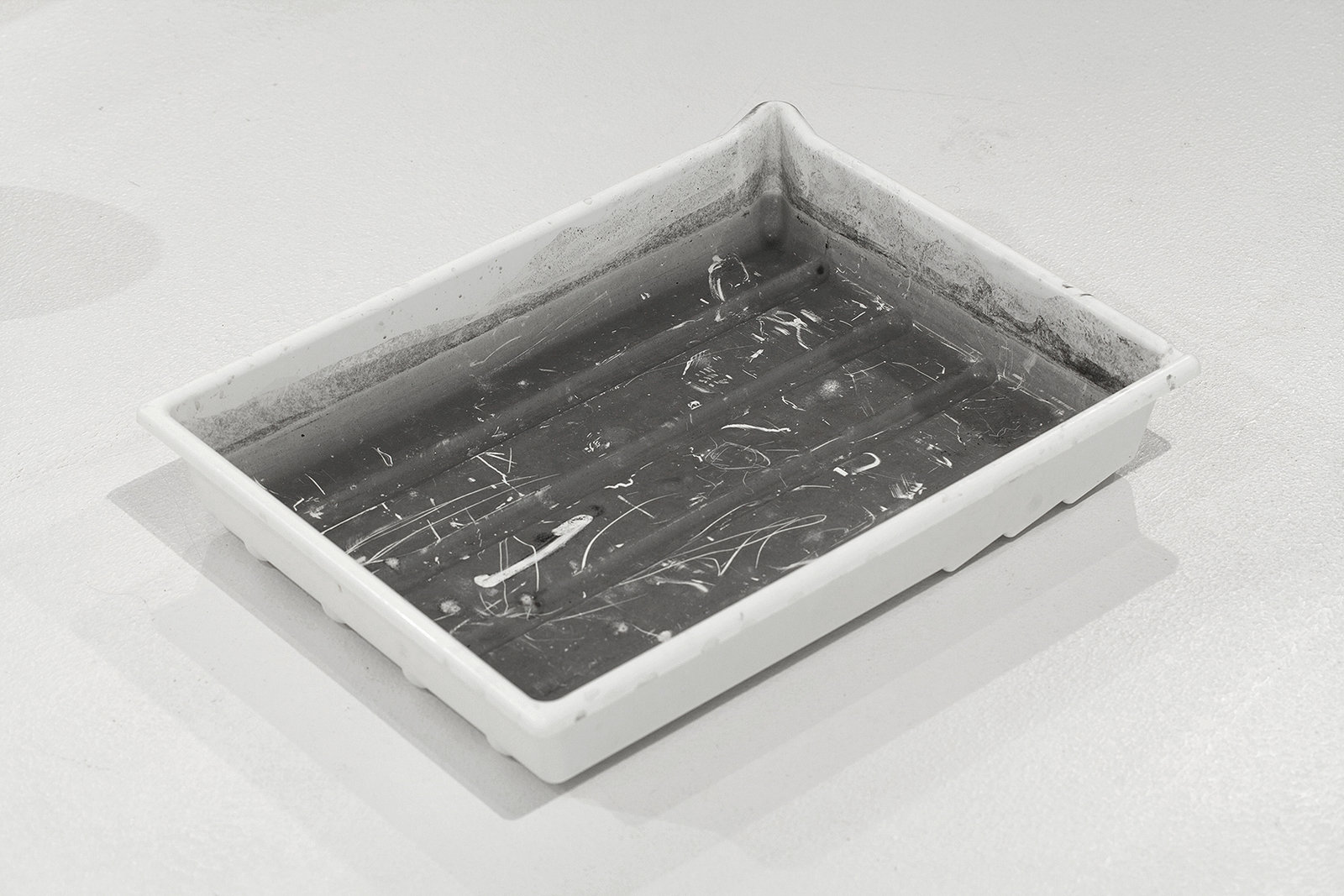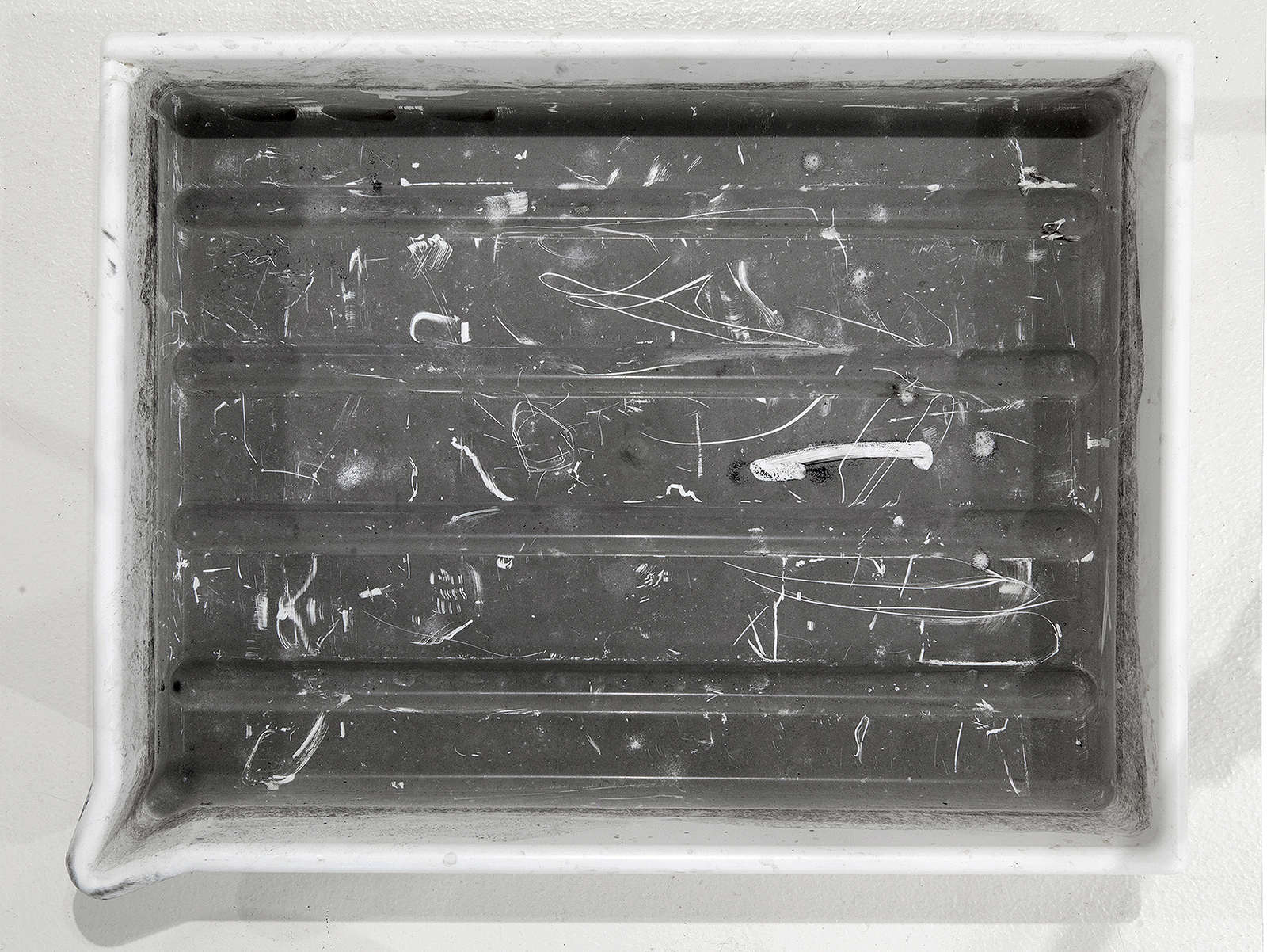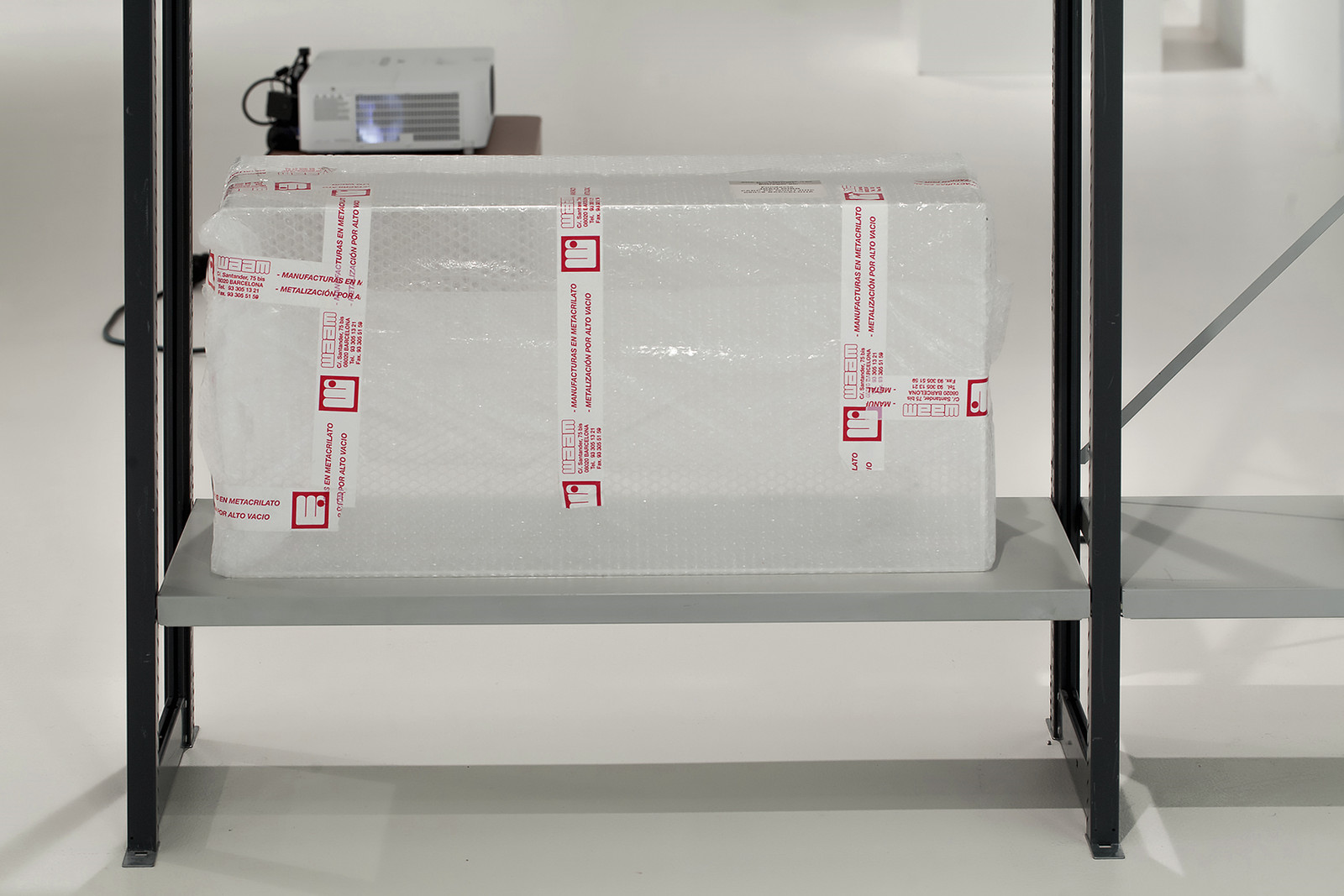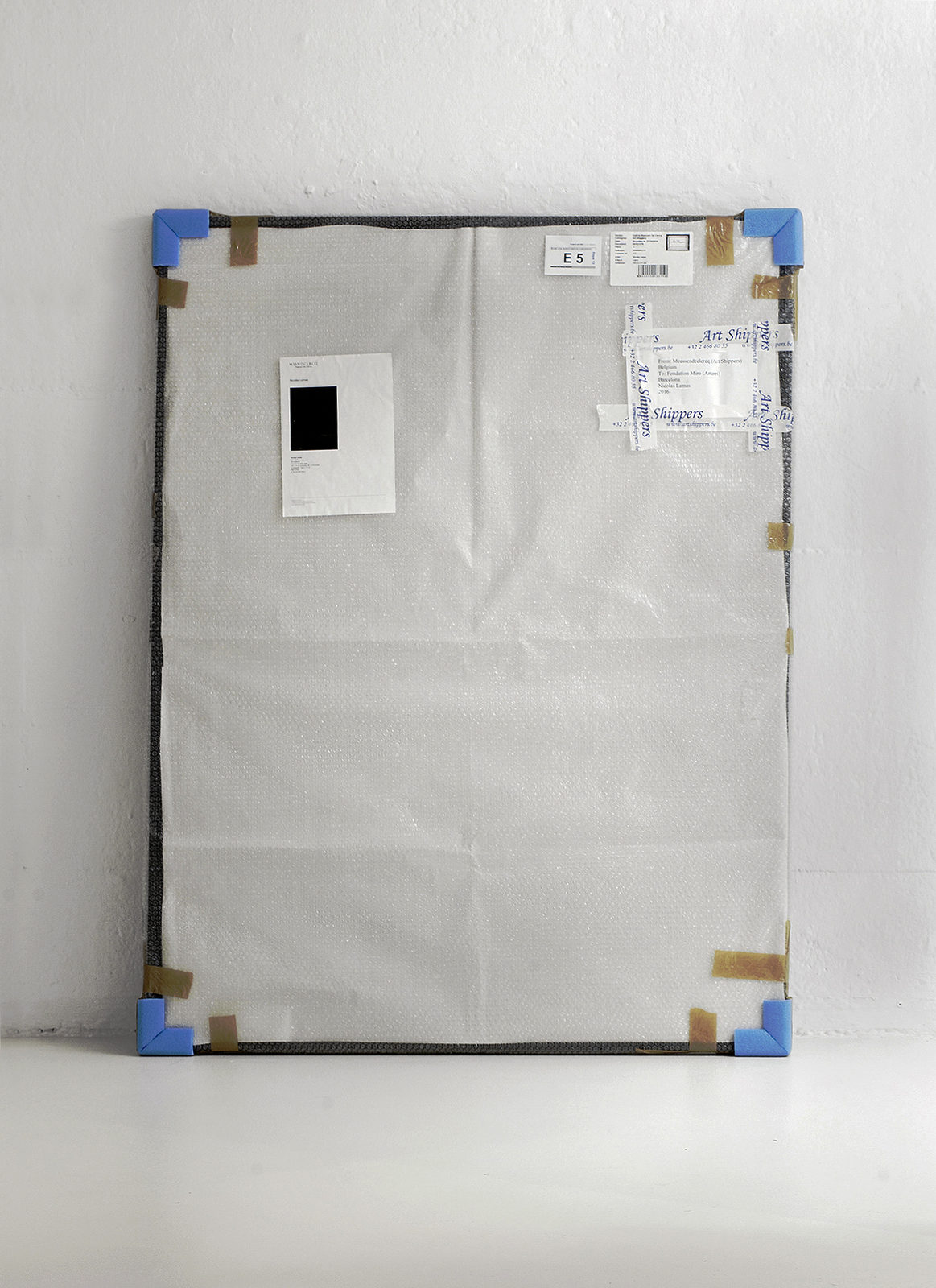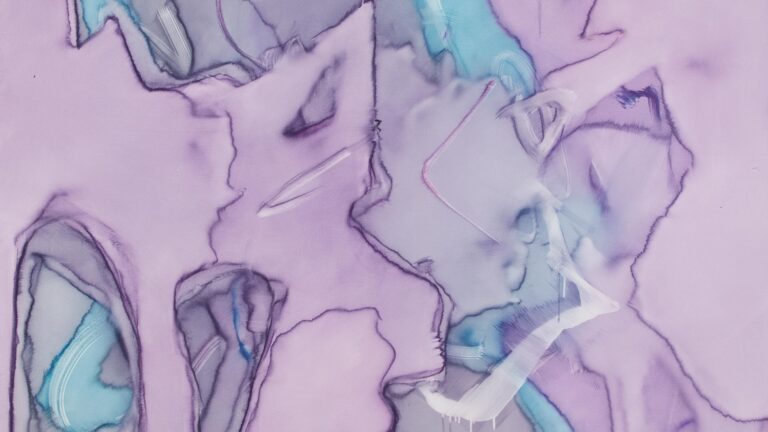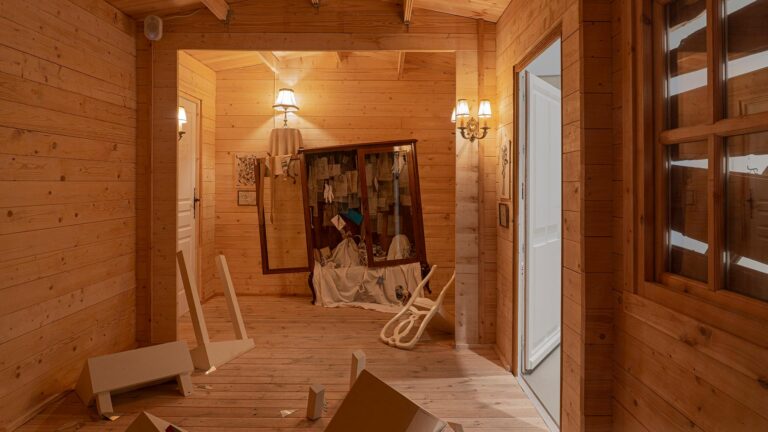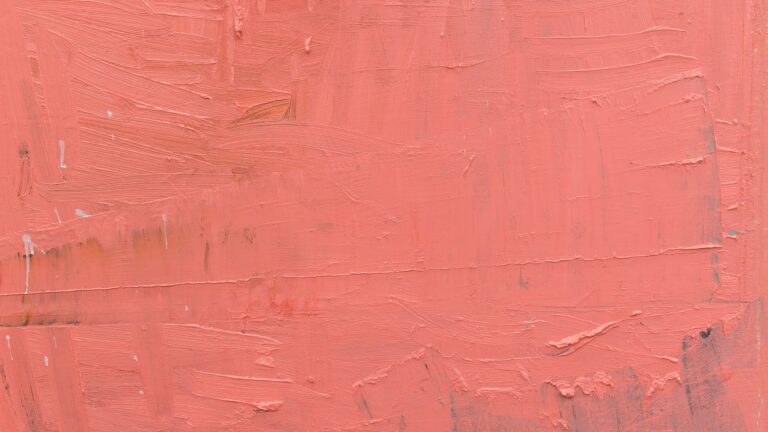Artist: Nicolás Lamas
Exhibition title: Every Object is a Temporal Space
Curated by: Jordi Antas
Venue: Fundació Joan Miró – Espai 13, Barcelona, Spain
Date: November 18, 2016 – January 8, 2017
Photography: images copyright and courtesy of the artist and Fundació Joan Miró
Poetic practice transcends pure thinking and materialises its objects, regardless of what is done. Poetic experience is nothing other than this transgression.
-Armen Avanessian, 1973
Every Object is a Temporal Space is a project by Nicolás Lamas for the second exhibition in the One Foot Out. Expeditions and Diasporas series at the Fundació Joan Miró’s Espai 13. The project sets up a series of encounters and open dialogues between pieces that revolve around different approaches to the visual, digital, and objectual realms. Based on an interest in images and objects in relation to place, Lamas explores the poetic power unleashed when these pieces physically interact with other elements, exploring them as active spaces with multiple levels of information which are subject to changes of form and content as part of processes of transformation. By doing so he seeks to understand and create gaps between the physical world and its traces, speculating on their component materials, their function in the world, and their connections with other objects.
The questioning of spatial boundaries and of the relationship between the subject, the object, and reality set the conceptual tone of this exhibition that explores the causal relations between culture and nature, image and matter, digital information and reality. It presents a web of links between objects and images that invites us to redefine and reconsider the nature of things under different criteria: on one hand, the project draws attention to the inconsistencies generated between the physical world and the systems of thought and representation that construct it; on the other, it looks at the relationships between knowledge, power, and form that determine how we perceive and interact with our environment. A constant flow of energy and information exchange – in which everything changes, or nothing remains – that acts within a system, which in turn forms another system, and so on successively, based on concepts such as space, matter, surface, energy, time, and traces.
In line with this reasoning, the point of departure of the exhibition is the notion of entropy as a measure of disorder within a system. Lamas presents a series of sculptures, photographs and videos, and explores each as a container of space with various levels of information. He then sets out to alter and modify them by opening up multiple readings: some very precise and meticulously constructed, building up an association that extends beyond their limits, and others which are a kind of alienation of their original meaning and their autonomy as objects, comprising place and territory as a single whole.
In concrete terms, the exhibition-installation is activated through various works. Blind Gestures (2014-2016), a series of large-scale images that explore the boundaries between the body and digital data by means of touchscreens, takes up the main wall of the exhibition space. It sets up an unusual relationship between two electronic devices, using a scanner as a photographic tool to display information that can be found on the interactive surface of digital tablets. The resulting images, reminiscent of paintings, are a more corporeal, performative expression of identity. A portrait of each owner, including fingerprints, drops of saliva, dust particles, hairs and scratches that add new layers and at the same time translate and connect the two sides of the screen.
Meanwhile, Plato’s Cave (2016) presents traces of light in a video installation based on the Greek myth from which it takes its title. Inside, only shadows of the real world are projected, like subtle, ephemeral traces of what is happening outside. A simple mise-en-scène consisting of a screen surrounded by vegetation that makes it difficult to make out what is being projected. In this case, Lamas focuses on the geometric element that emerges in the very well-defined exterior (trees and foliage), which contrasts with the dynamic, unpredictable projected light. A process that is somewhat akin to the interaction between digital information in a graphic table and the abstract traces that we leave when we use it.
Another work along similar lines, Black Mirror (2016) shows the dark vision of reality that is reflected back at spectators who see themselves on the black reflective surface of a blank screen. In this case, Lamas opts to show a world framed through the reflection generated on a surface that confronts the body with its own reflection. Something similar happens in Partial View (2013-2016), where interaction becomes incompatible due to a device that attempts to record and digitalise reality in that face of matter, in an allusion to the weight of the digital image and to technological collapse.
On a different level, Stop motion #3 (2016) is a sculptural, pliable surface, that visitors can modify throughout the exhibition, leaving marks, fingerprints and gestures that overlap, creating a constantly changing piece that is transformed according to criteria that are not subject to any particular purpose or result that can be controlled. A hybrid, gestural piece based on the interaction between the moving images on the screen and the sculptural frame that constantly changes through bodies and marks.
Lastly, the exhibition is rounded off by a range of pieces placed throughout the exhibition space, on the walls, the floor, and on furniture elements from the Fundació Joan Miró’s own warehouse. Drawing on various analogies, Lamas creates a microcosm based on plays on words, disrupts useful structures, and generates – and deletes – layers of information, in order to make the loss of function visible. In this way, he highlights the relativity of the relationship between object, gaze, and spatial boundaries, emphasising the capacity for interaction and reorganisation of elements, data, codes, and traces that accumulate and overlap as a result of actions and events that attempt to mutually coexist. An analysis that spans reality and the void, matter and light, analogue and digital information, rigid and flexible boundaries, illuminating the invisible and what appears to be the ascertainment of a change in the logic through which we understand the space that we cohabit and our world.









